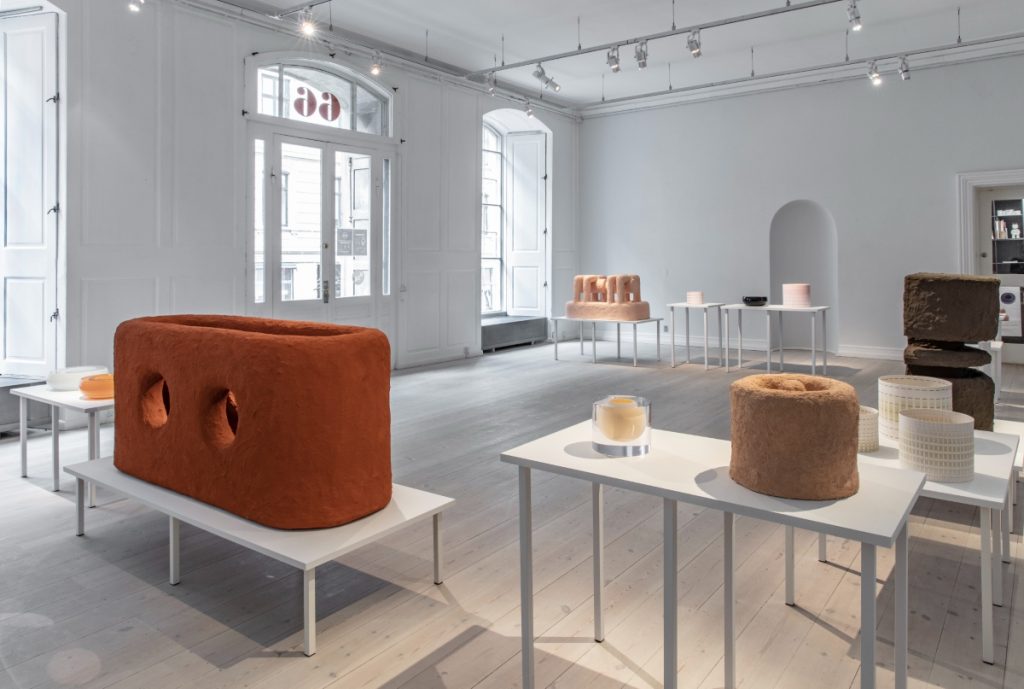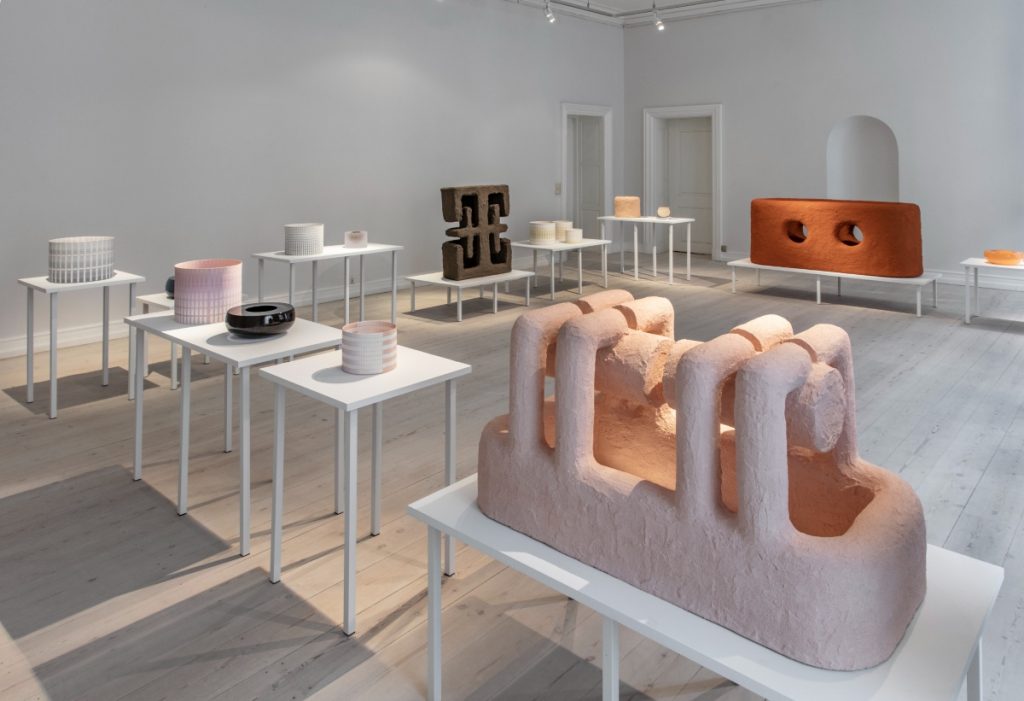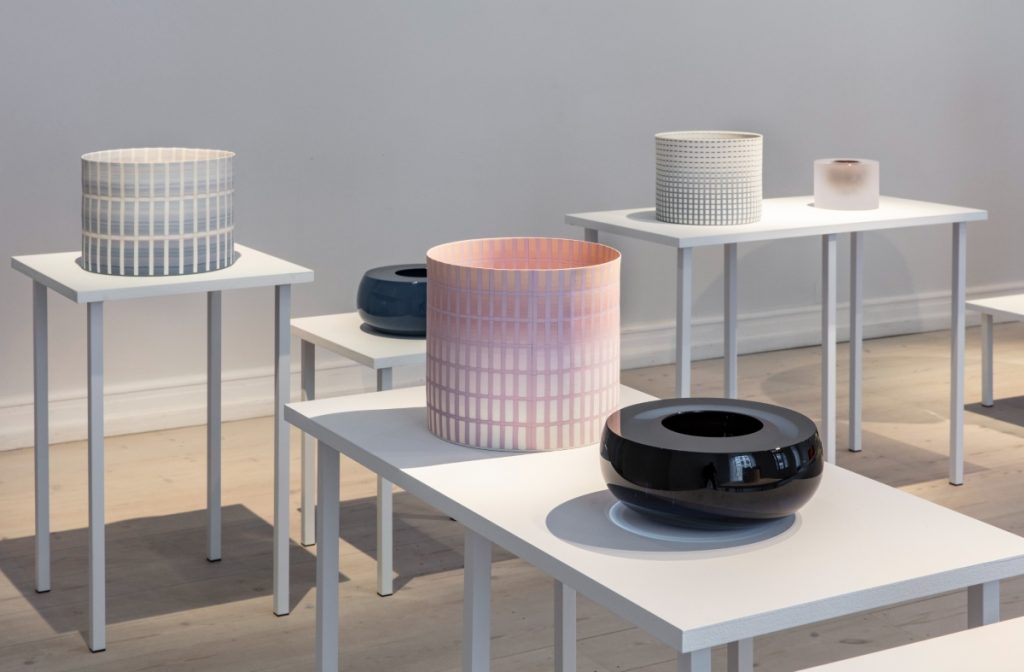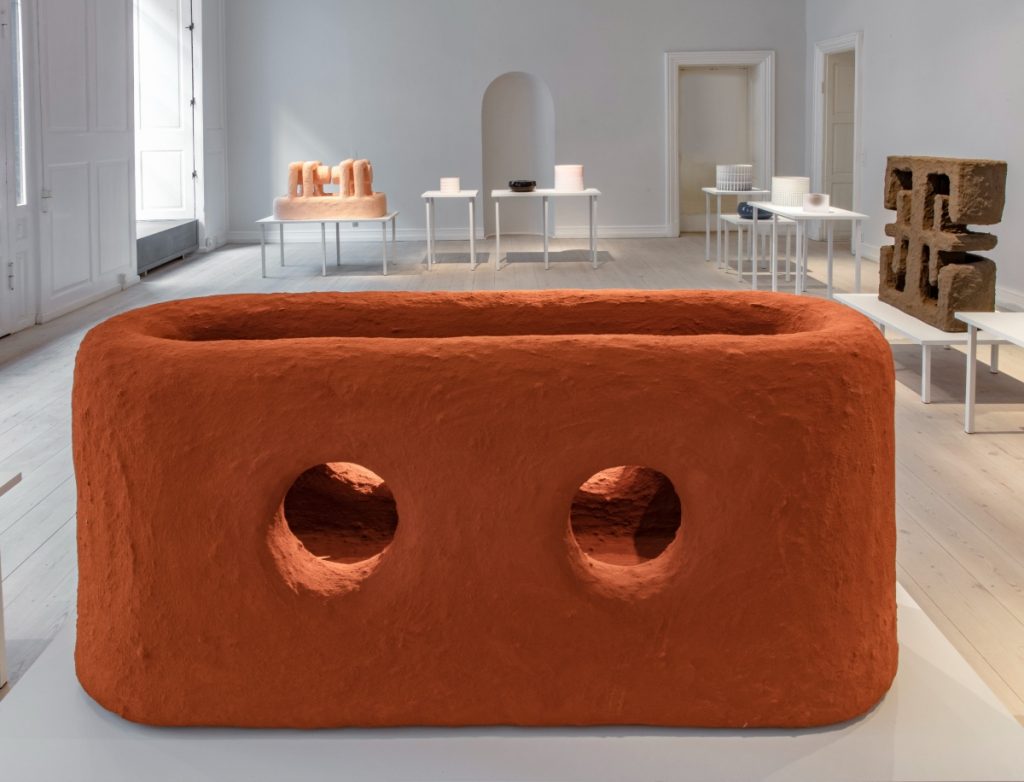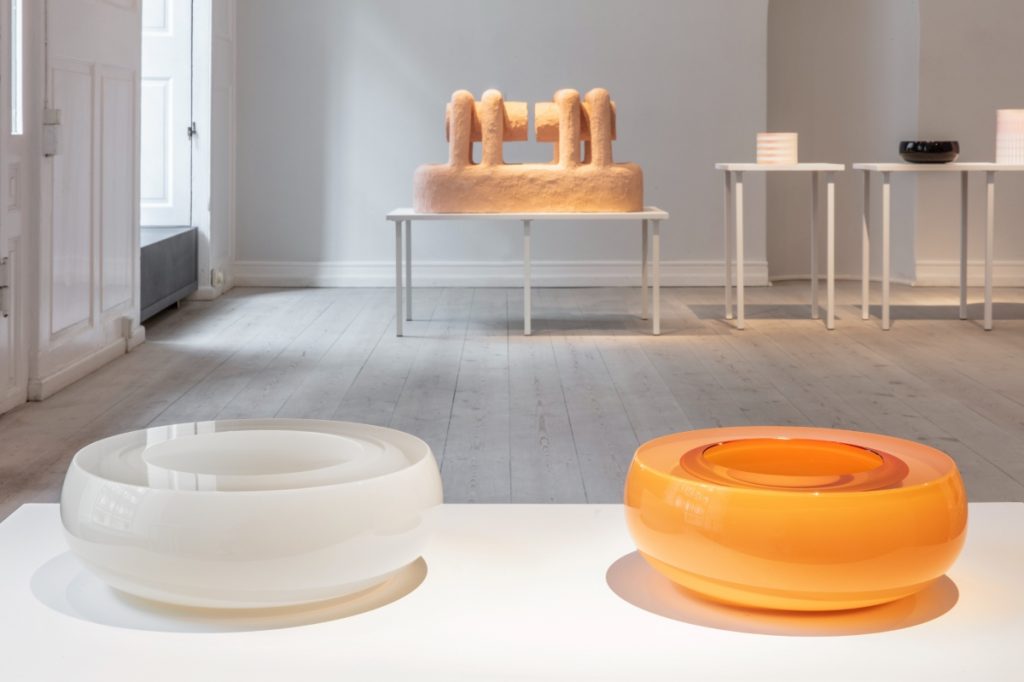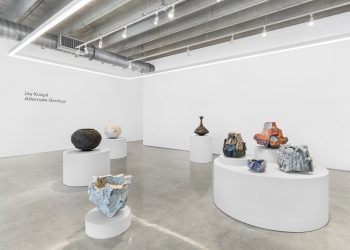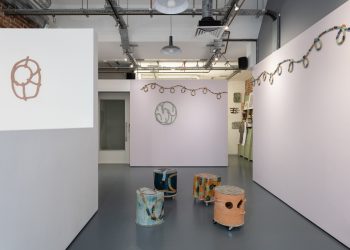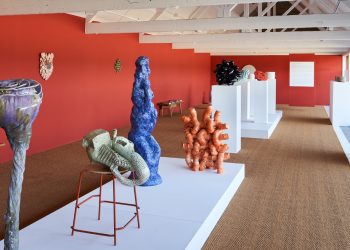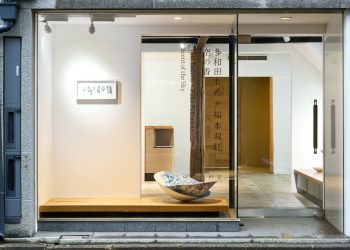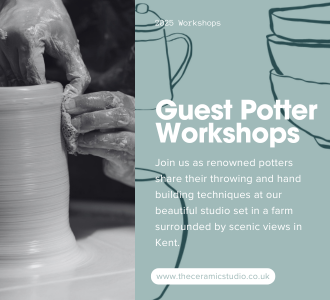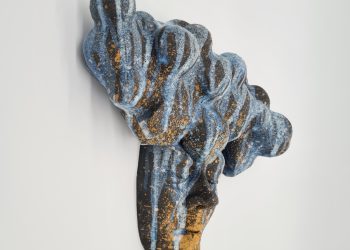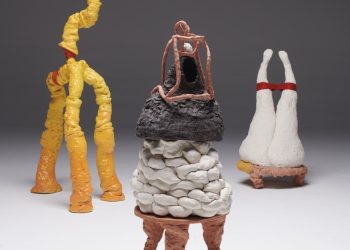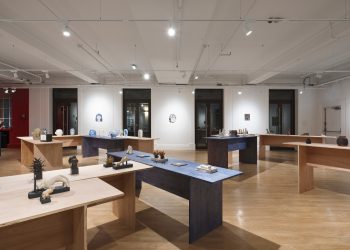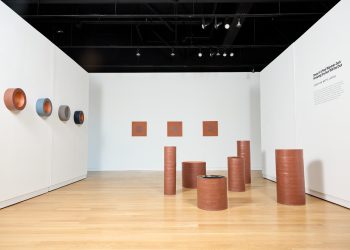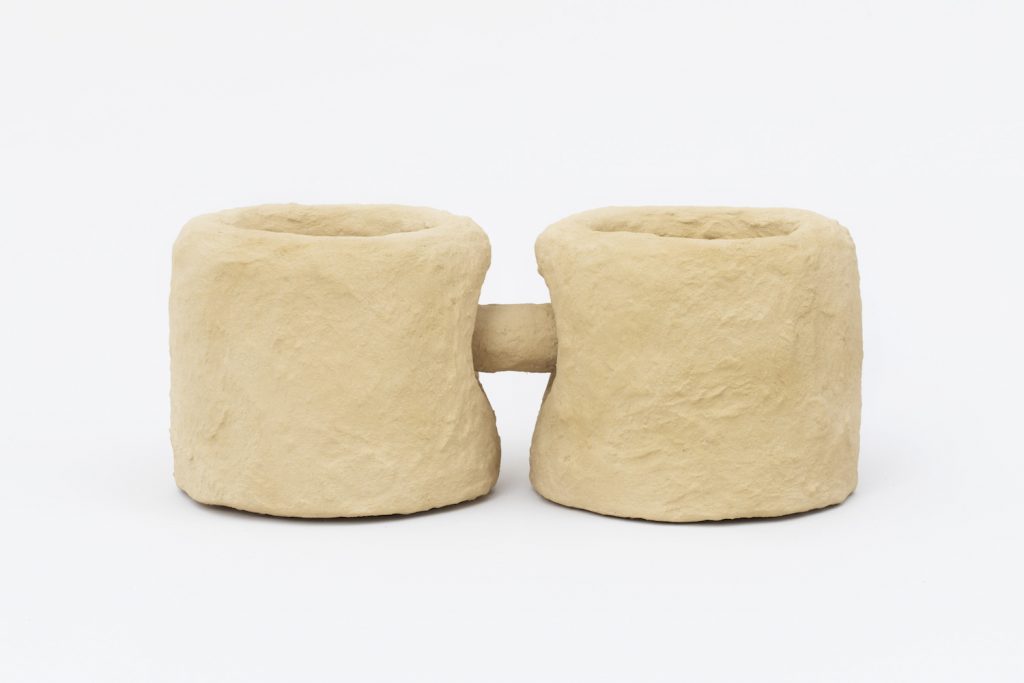
Carl Emil Jacobsen, Ochre Powder Variation 3, 2018 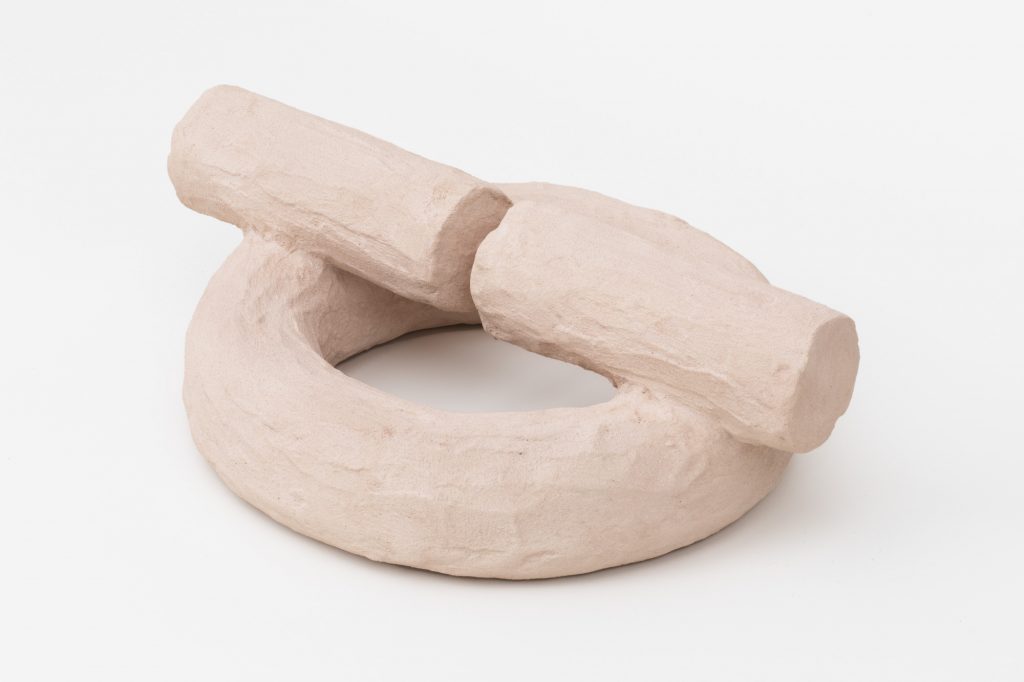
Carl Emil Jacobsen, Pink Powder Variation #6, 2018 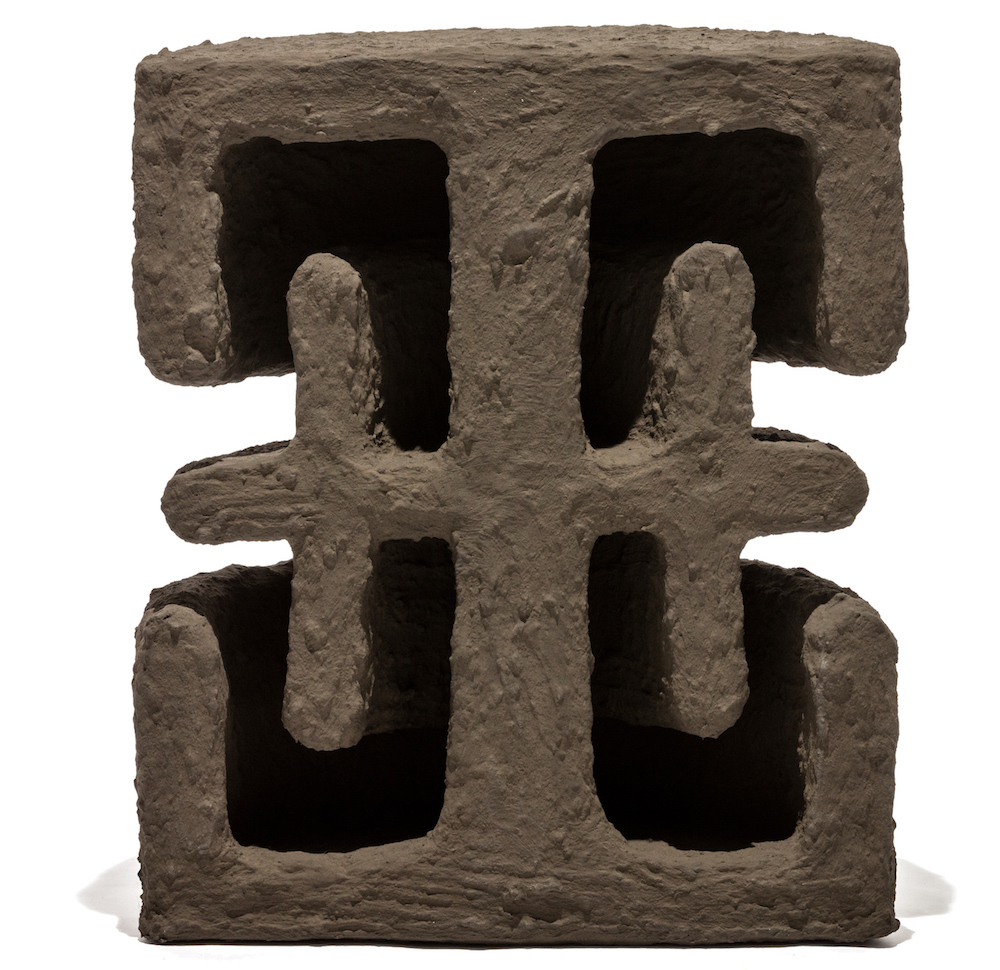
Carl Emil Jacobsen, Half Piece 4, 2018 
Lotte Westphael, 4 porcelains 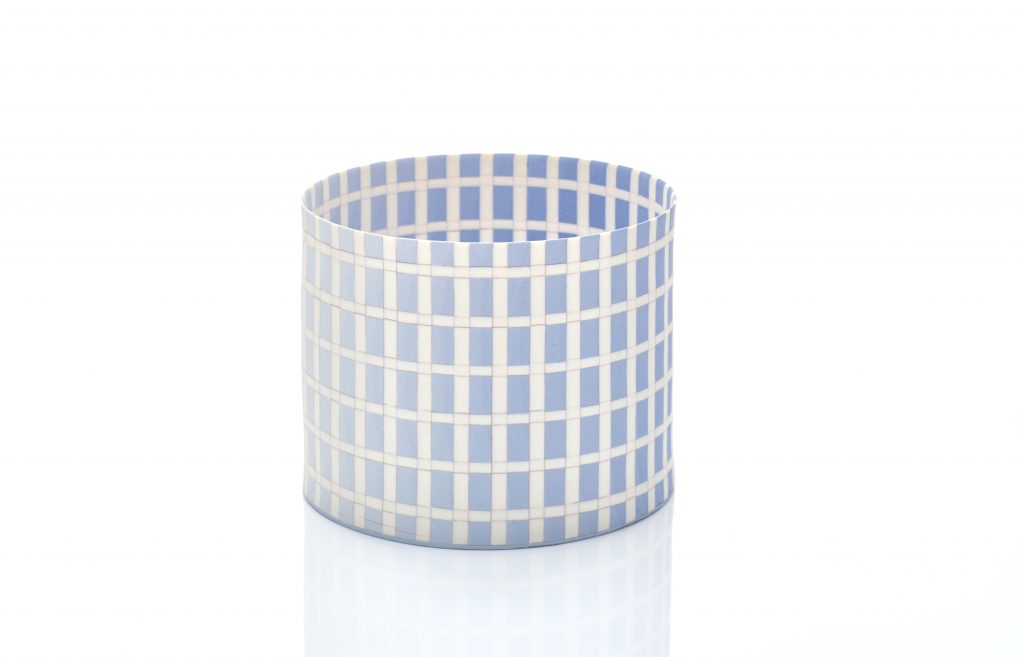
Lotte Westphael, Blue Grid Gradient, 2021 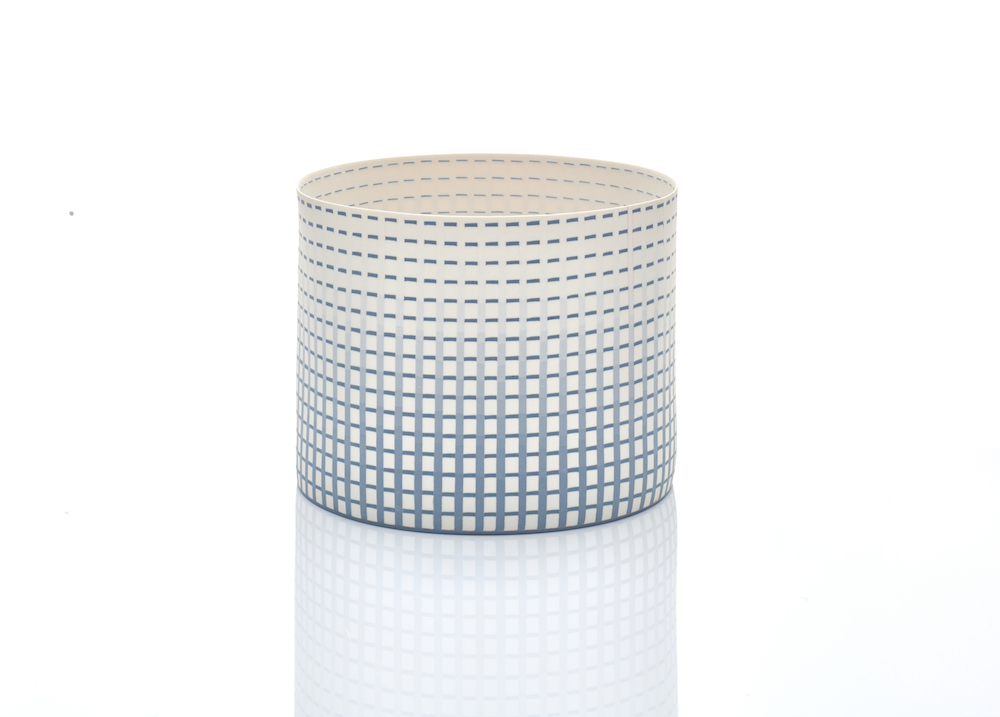
Lotte Westphael, Polyrhythm Gradient – Bluegrey, 2020 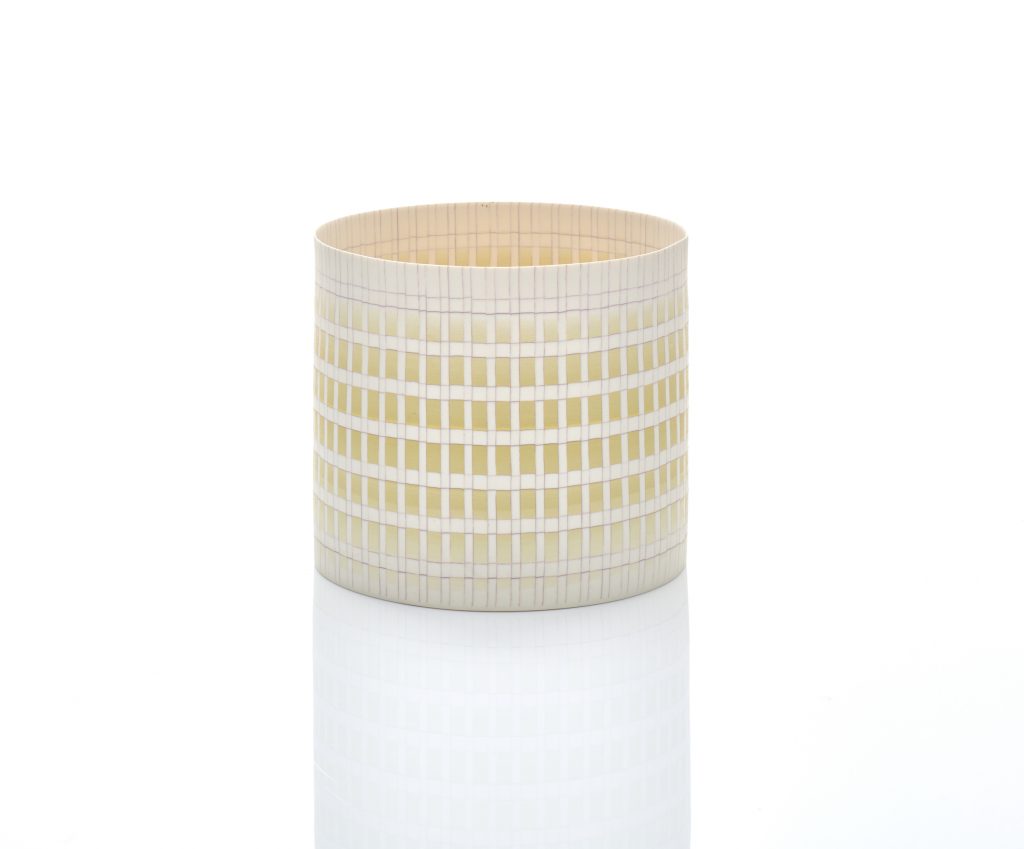
Lotte Westphael, Yellow Grid Gradient, 2020 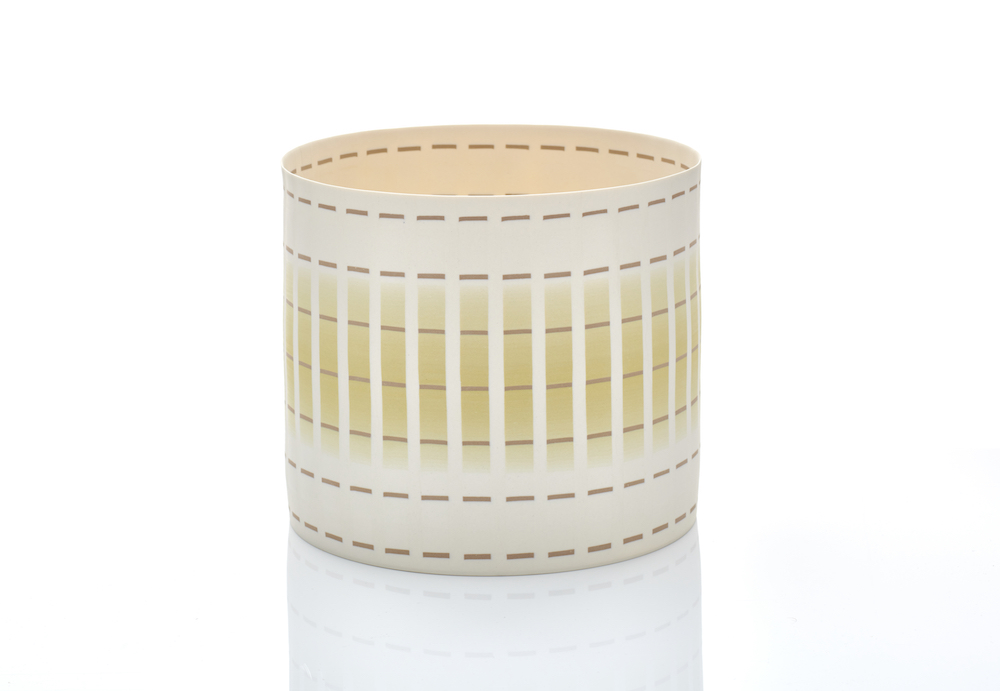
Lotte Westphael, Yellow Textile Gradient, 2020 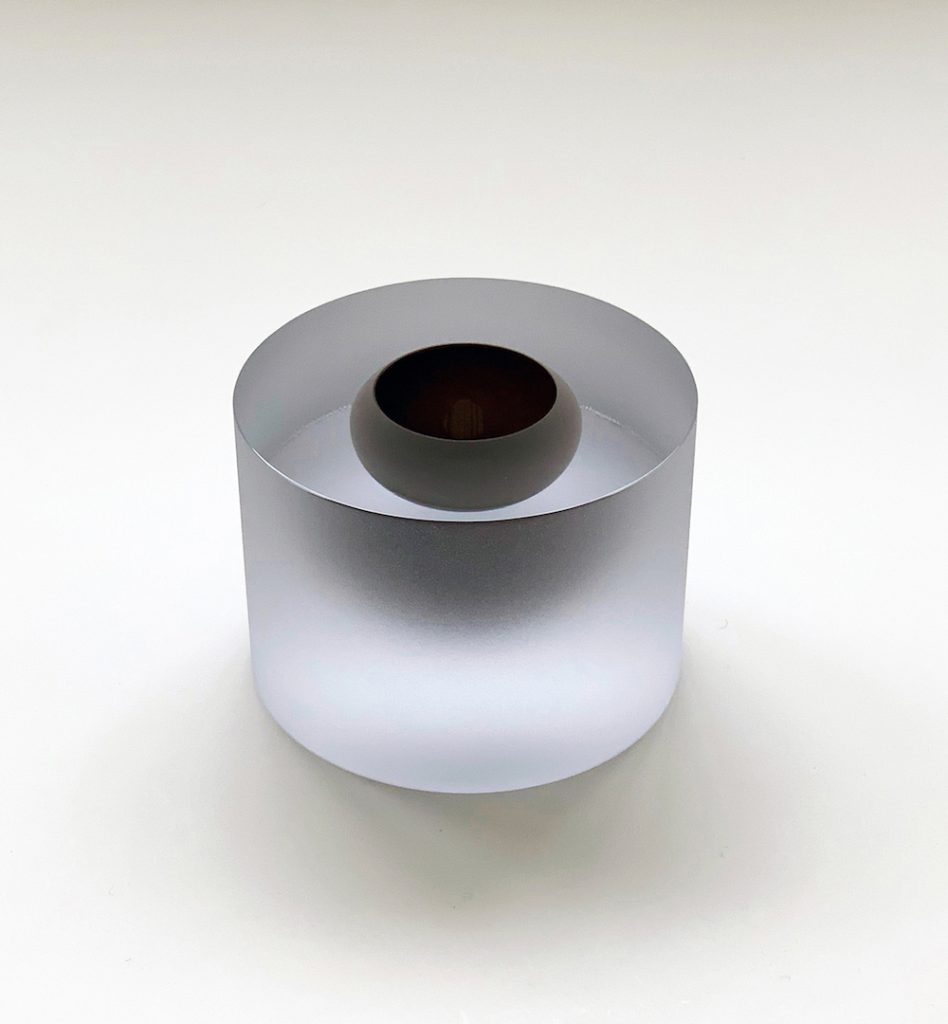
Tora Urup, Mat cylinder with floating bowl, 2016 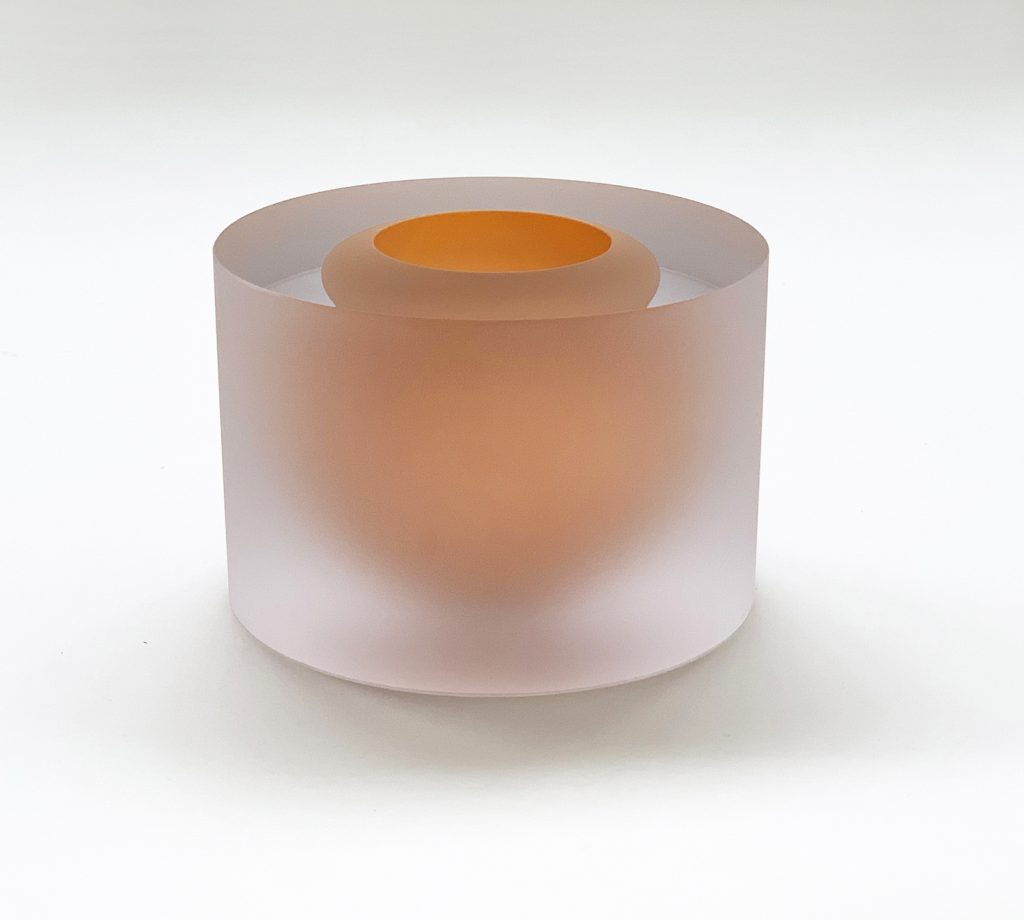
Tora Urup, Mat cylinder with floating bowl, 2019 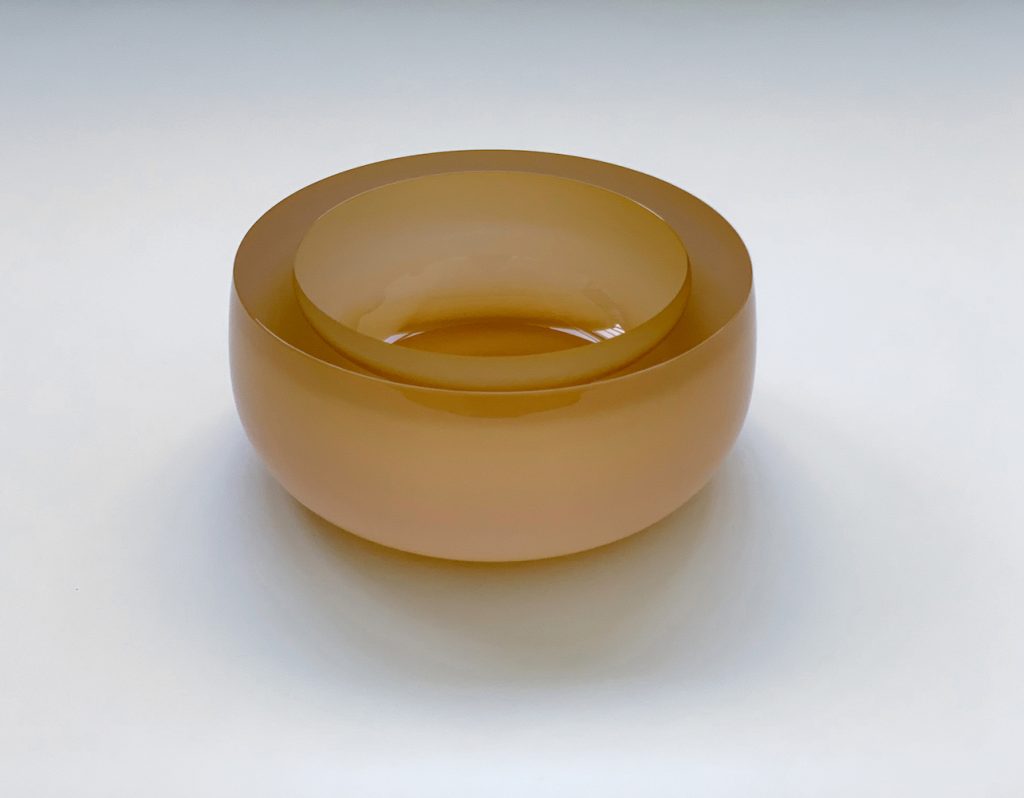
Tora Urup, Persimmon, 2013 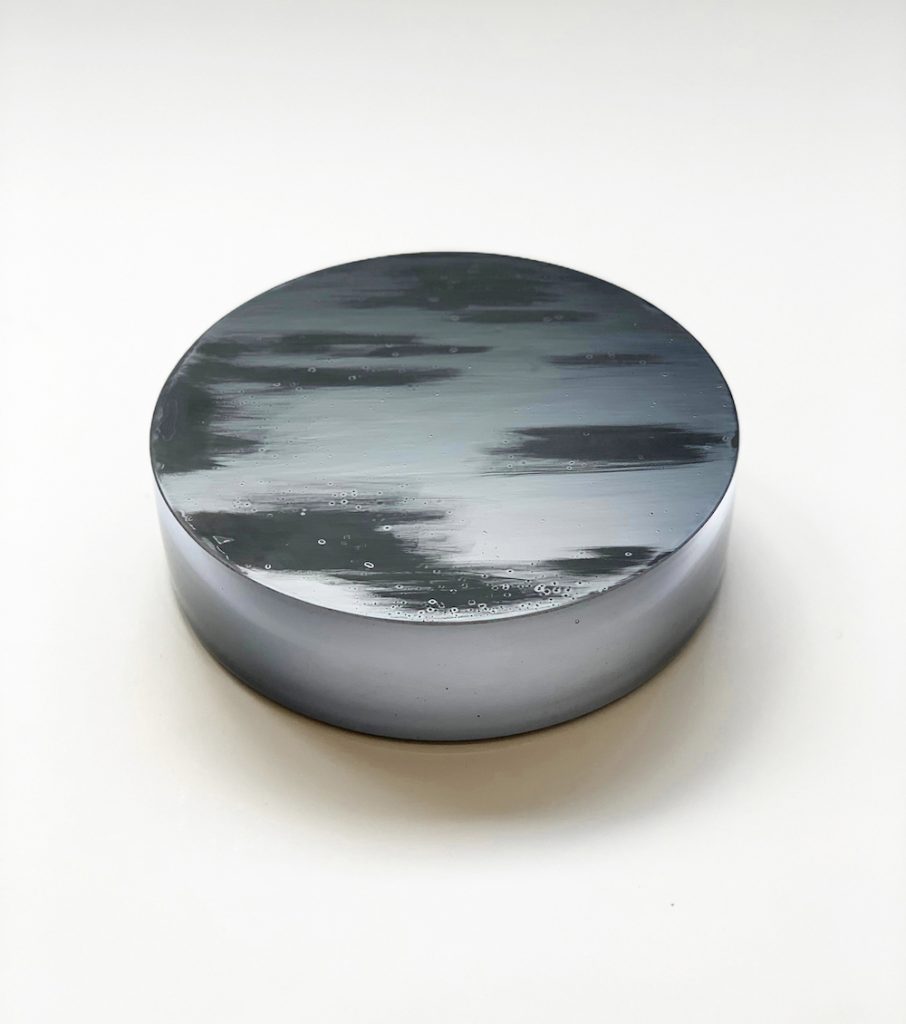
Tora Urup, Traces – Floating Urushi, 2021
Line – Space – Texture. The Poetics of Form is on view at Officinet, Copenhagen
August 26 – September 11, 2021
Exhibition by Galerie Maria Wettergren, Paris
The exhibition Line, Space, Texture. The Poetics of Form presents the works of Lotte Westphael, Tora Urup and Carl Emil Jacobsen in a dialogue at the intersection of art and design.
What do Lotte Westphael’s crisp porcelain vessels and delicate ethereal lines have in common with Carl Emil Jacobsen’s dense and massive sculptures in powdered stone, or with Tora Urup’s floating, transparent trompe l’oeil glass bowls? An uncompromising experimentation with a specific material and process, emanating from a personal poetic quest, which is both born from and transcending the material. Sensuous investigations of fundamental artistic principles, such as line, space and texture, unite these three artists and their explorations. Another leitmotiv is a certain resemblance to functional objects at first glance, but instead of serving a purpose, these objects are poetic premises, artistic departures towards something else. By provoking unexpected dialogues between these different works, the exhibition will highlight the singularity of each artistic expression.
Since 2001, Tora Urup has shown a particular interest in exploring the visual effects obtained within a series of circular glass sculptures in vibrant colors of thin opaque and thick transparent glass. These works reflect Urup’s investigation into the specific role of color and material in our perception of volume and space, as well as her transformation of archetypes, such as the glass bowl, into dream-like objects. By combining subtle colors and making them interact, Urup enables new spatial perceptions that alter our conventional understanding of the traditional glass bowl. The inner volumes of these trompe l’oeil sculptures appear to float independently of their outer shell, and through the careful juxtaposition and treatment of the cut and polished surfaces, Urup creates the illusion of a seemingly infinite, fluid space within a physically restrained volume.
These floating crystalline glass illusions are almost diametrically opposite to the great weightiness and powdered texture of Carl Emil Jacobsen’s crushed stone sculptures. Jacobsen works with found materials, such as fieldstone, limestone, marble and bricks from demolished buildings, which he converts into fine powder natural pigments in intense colors. In homage to the subtle richness of color in the Nordic landscape, he brings new life to these powdered stones, transforming them into pigments for his Powder Variations works. These sculptures place particular emphasis on color, light, shadow and the ability of form to enhance the experience of a particular color and texture. Inspired by the theory of late Danish sculptor Willy Ørskov’s that “the content of the sculpture is sculpture”, Jacobsen’s nonfigurative sculptures exist on their own terms as abstract, physical forms fostering experiential connection over intellectual interference in the elastic borderland between nature and culture.
Lotte Westphael’s delicate and graphic porcelain vessels form an interesting counterpoint to both Tora Urup’s fluid universe and Carl Emil Jacobsen’s compact forms. Westphael works with lines and colors in geometric patterns, shaped into porcelain cylindrical vessels. Over a number of years, she has developed and refined her own personal technique in which she constructs fine strips of colored porcelain in vertical and horizontal lines. Like Urup’s and Jacobsen’s works, Westphael’s vessels have a strong tactile character that at the same time question the material and technique of the work. Like Urup and Jacobsen, Westphael works with color, but instead as fields on a curved surface: the cylinder is her three-dimensional canvas, and her process revolves around an interest in proportion and rhythm in lines, often inspired by Anni Albers’ textiles, as well as Agnes Martin’s Grids.
Contact
info@mariawettergren.com
Officinet
Danish Artisans & Designers project room and gallery
Bredgade 66
1260 Copenhagen
Installation photos by Ole Akhoej


